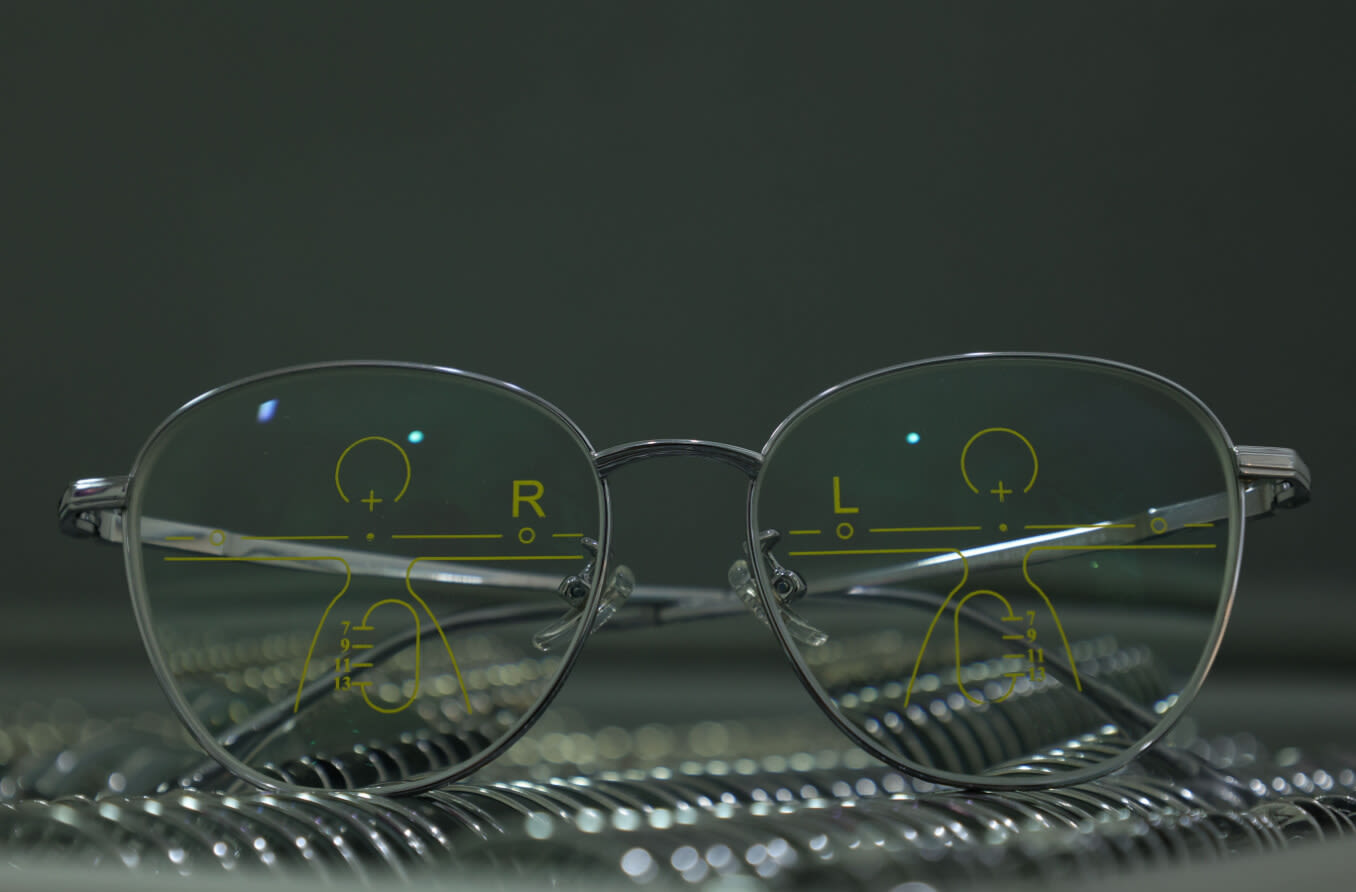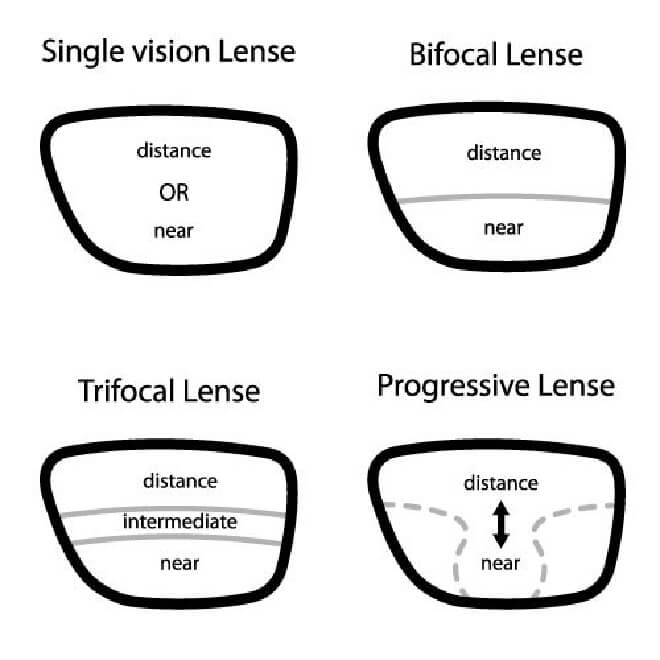What’s the Difference Between Single-Vision and Progressive Lenses?

What’s the difference between single-vision and progressive lenses?
Single-vision lenses have one prescription throughout the lens, while progressive lenses have a prescription that changes from top to bottom — allowing you to see clearly at all distances. Progressive glasses look like single-vision glasses because they do not have a visible line like bifocals.
Both types of lenses help you see the world more clearly. Each has advantages and disadvantages. The best choice depends on unique factors such as age, lifestyle, and budget.
If you are unsure whether to get single-vision or progressive lenses, we’ll explain the key features of these lenses and how they work. An eye care professional can provide personalized recommendations based on your needs.
Overview of single-vision lenses
Single-vision lenses have the same prescription across the entire surface. They are ideal for correcting vision issues such as nearsightedness or farsightedness. This lens type has one power that remains constant throughout the lens.
Many people use single-vision glasses for tasks like driving or using the computer. Reading glasses with single-vision lenses are also quite popular.
Single-vision lens pros and cons
Single-vision lenses provide a great solution for correcting refractive errors such as nearsightedness, farsightedness or astigmatism.
Pros
Suitable for most people – Single-vision eyeglasses are a great choice if you have only one vision problem and do not need different prescriptions for distance and near vision.
Easy adaptation period – These corrective lenses are comfortable and easy to use, even if you’ve never worn glasses.
Cons
Limited vision correction – Single-vision lenses correct a refractive error so that your vision is clear at one distance. Younger people can use their natural accommodation to see clearly at all distances. But, if you have age-related vision changes, such as presbyopia, you may require multiple glasses to see clearly at both distance and near.
Overview of progressive lenses
Progressive lenses are considered multifocal lenses. This means they have a near, intermediate and distance prescription, providing clear vision at all distances. This kind of lens is unique because it gradually changes in power from the top of the lens to the bottom. The top is for distance vision, the middle is for intermediate vision, and the bottom is for near vision. This allows you to see clearly without switching between two or more pairs of glasses.
Progressive lenses vs. bifocals

Progressive glasses are sometimes confused with bifocals. This is because they both correct for distance and near vision in one pair of glasses. Traditional bifocal lenses have a visible line that separates the distance and near prescription.
Progressives, on the other hand, have a seamless transition between each section. There is no visible line, giving the appearance of single-vision glasses. They have the additional benefit of providing clear vision at intermediate distances. Many people prefer progressives because they offer a more natural look.
Progressive lens pros and cons
Progressive lenses are a convenient option for people with presbyopia, an age-related loss of the ability to see clearly up close.
Pros
Convenient – You can see clearly at all distances with a single pair of progressive glasses. There is no need to carry around multiple pairs during the day.
Seamless – There is no visible line on progressive lenses. This makes them more aesthetically pleasing.
Gradual change in power – The gradual shift in prescription may be more comfortable for the eyes.
Cons
Longer adaptation period – Getting used to multifocal glasses takes time, especially if you have never worn them before. First-time wearers should be cautious when navigating their surroundings.
Limited options – If you have a stronger prescription, you may not be able to get certain frame styles. For instance, progressives may not fit well in a rimless or semi-rimless frame.
Peripheral distortion – Due to the design of progressives, your peripheral vision may sometimes appear distorted. This can be minimized with high-quality lenses and a proper fitting by an eye care professional.
How to know which lens type is right for you
Here are a few factors to consider when choosing the best lenses for your glasses:
Age
Single-vision lenses may be the best option if you are under 40 and have no issues other than nearsightedness or farsightedness. Those with additional age-related vision changes may benefit from progressives.
Lifestyle
Consider your daily activities. Single-vision glasses are a practical choice if you only need glasses for one specific task, like driving or reading. Progressives are beneficial if you switch between pairs of glasses frequently.
Budget
A multifocal lens tends to be more expensive compared to other options. However, investing in one pair of progressive eyeglasses may be less costly than buying several pairs of single-vision glasses.
Recommendation from an eye care professional
Single-vision and progressive lenses have several advantages and disadvantages. If you are still unsure about your options, an eye doctor can recommend the best eyewear for your needs. During the eye exam, they will check the health of your eyes, update your prescription, and provide appropriate recommendations to optimize your vision.
Remember, regular examinations are crucial for maintaining good eye health. Your eye doctor can help you choose the most appropriate lenses as your vision needs change over time.
Eyeglasses: How to choose glasses for vision correction. American Academy of Ophthalmology. June 2023.
Eyeglasses for refractive errors. National Eye Institute. July 2019.
Eyeglasses. Cleveland Clinic. September 2020.
Pros and cons of progressive lenses. American Academy of Ophthalmology. April 2023.
Multifocal lenses. Canadian Association of Optometrists. March 2023.
Smart ways to save money on eyeglasses. AARP. November 2021.
Eyeglasses stores buying guide. Consumer Reports. March 2023.
Page published on Wednesday, November 1, 2023
Page updated on Tuesday, November 7, 2023
Medically reviewed on Wednesday, October 18, 2023






